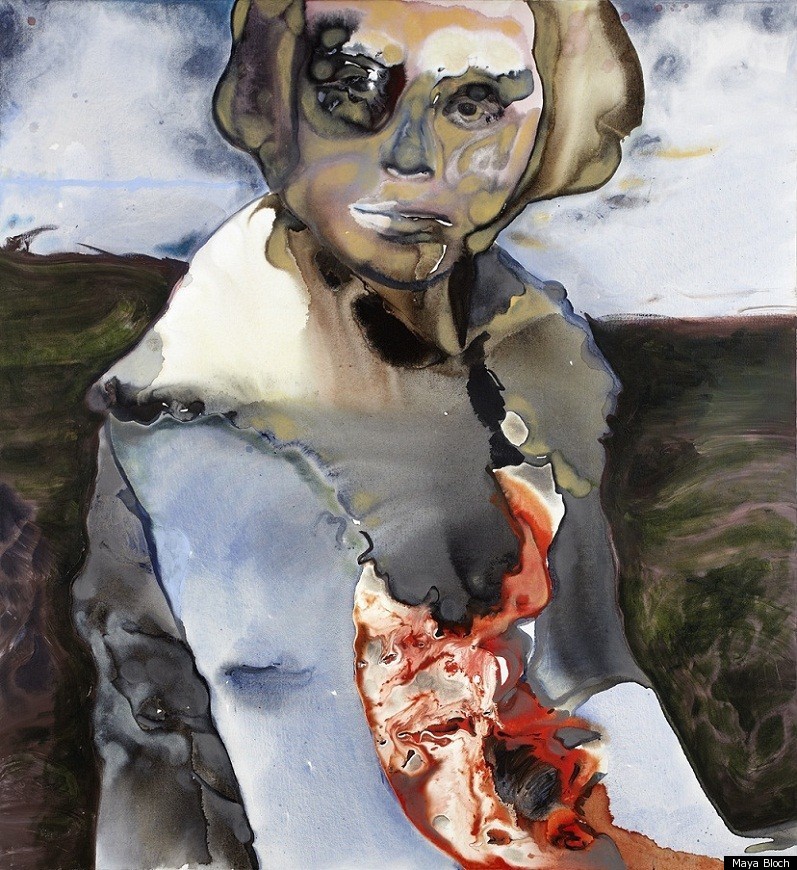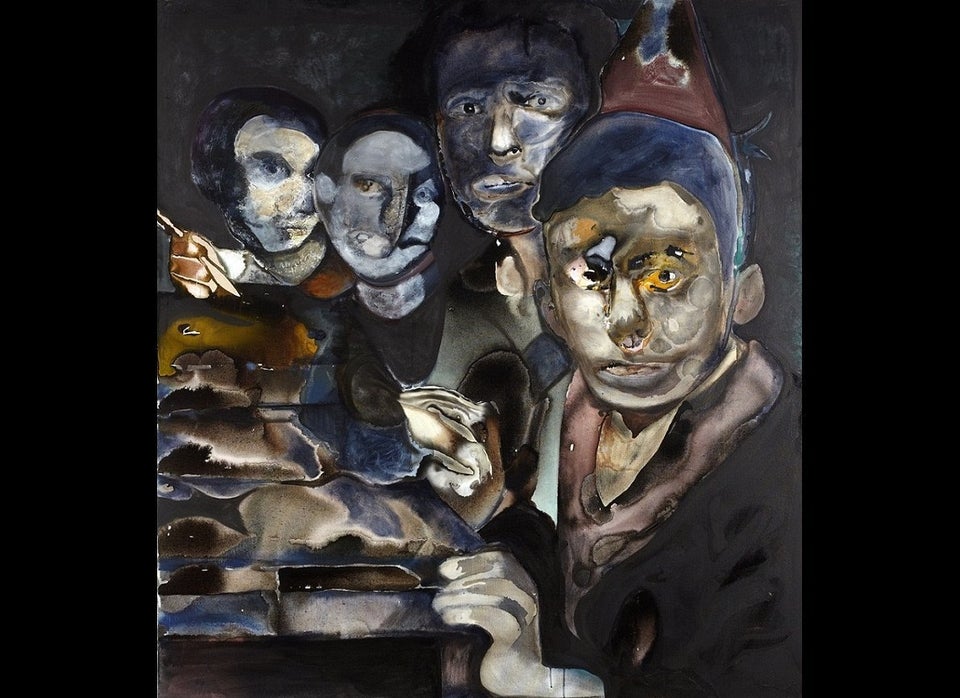Maya Bloch is an Israeli painter who creates haunting, melting portraits that recall a nightmare family reunion. Rendered from photographs, Bloch erases the humanity from her subjects as their parts bleed in and out of recognition. Her dehumanizing style echoes Francis Bacon and Marlene Duman but adds a photographic sheen to the lascivious mix, creating a ruined nostalgia, a hung-over memory, and ultimately a distorted photograph that invites viewers in and repels them simultaneously.
We asked Bloch a couple of questions about body parts, liquid and strangers and the results may surprise you.

HuffPost Arts: Was there a moment that you recall your artistic vision/style coming to you? Was it triggered by a certain event or an a-ha moment or was it organic?
Maya Bloch: A while ago, when I was still just experimenting with painting at home I poured a bit of coffee on the paper to see what will happen. It was like magic to me. My artistic style is always developing from the urge to "ruin" the characters I paint. Usually I "erase" them by putting color on the surface. It happened once, almost by accident and I can't stop doing it. I always like kind of avoiding creating the works by myself. There is always the need to stop existing, to minimize my presence in creating the works, trying to be unaware of what I'm doing.
HuffPost Arts: You do not title your works, and your last show was called "hello stranger." Do you feel intimately connected to the people you paint and create or are they strangers to you as well?
Maya Bloch: There is a process involved. At first, the people I paint are complete strangers to me. My inspiration comes from faces and scenes of unknown families in photos I collect. Those people are much more strange than strangers -- I try to realize them as an abstraction and not just a figure. (The subject disappears.) They come back gradually after I "discover" them in the paintings. A stain of color somehow becomes the nose or the hand. I'm looking at it and try to figure out whether it can remain like that, or whether it should be changed. Some parts of the painting are always changing. Sometimes the order of acts in the work is the opposite -- at first they are very realistic and afterwards I make it more abstract. There are no strict rules. At the end of the process, I feel like I'm getting to know these people, I understand them much better and its like they know all the truth about me.

HuffPost Arts: Most times a painting flirts with photography through a photorealistic style, but your works pairs painterly abstraction with the metallic glint of a photograph. How would you describe your work's relationship to photography?
Maya Bloch: The connection between photography and painting intrigues me. The way painters translate photographs into paintings is fascinating especially when painting exceeds from the object depicted in the photo. I just love it when I don't really know what will come in the end. It never comes out like a photo and I believe that by trying to paint something from reality and translating it "wrongly" it breeds another reality, reality of painting. Everything can exist there. I'm very obsessive with collecting family photos, trying to find there something unusual, even spiritual. It is a moment frozen in time, most figures are posing for the camera, some are not aware of being photographed -- and so I try to decipher it, to find things that could not have exist in the photo, it can only be born in the painting.
HuffPost Arts: Your figures seem to be in an intimate, if not dangerous, relationship to liquid (or paint's materiality), since they appear to be bleeding or melting. Is this relationship productive or perilous?
Maya Bloch: Well, this relationship you mention is very complicated. My biggest aim in my process is to be intimate with the media of the liquids I work with, to melt inside and disappear . When I get to this ideal point, nothing can be perilous anymore. This process creates sometimes "serendipitous accidents" which result in things I could never think of by myself. But it's not easy, it comes with a lot of frustration. I destroy works and cut all kind of forms (usually heads) and make new painting by using collage. Nothing get wasted.

HuffPost Arts: It seems like a theme in your works that faces are obscured while bodies are almost offered up. Do you see a disconnect between bodies and faces, especially in light of what it means to be "a stranger"?
Maya Bloch: Yes, there is definitely disconnection between heads and bodies or other organs. It's like the disconnect between the object in the painting and its meaning. The figures are not just ordinary people; I'm not dealing with what they are as an object, but with how they are being created and what they become in the end. Where is the essence? Is it in the face or in the body? Why don't they connect? I'm not sure about the answers and this is how it is. The state of being unclear with myself is what keeps me going and painting the next painting.
Check out some of Maya's works below, and let us know what you think in the comments section.

